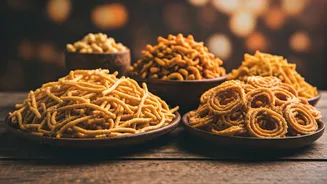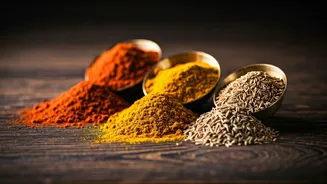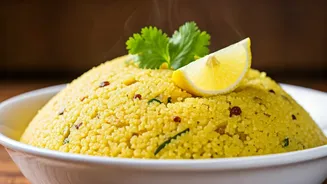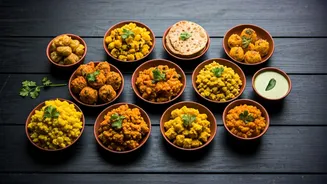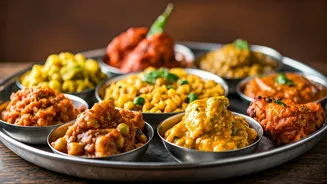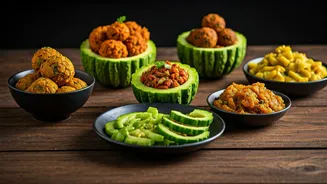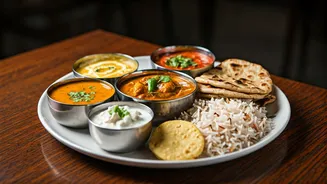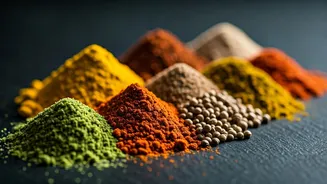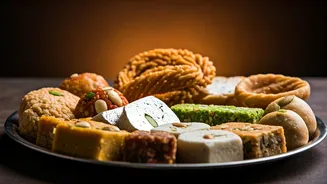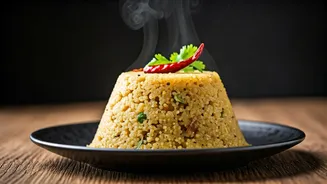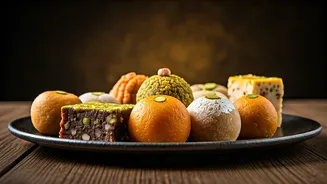Namkeen's Timeless Allure
Indian namkeen, a category encompassing a wide array of savory snacks, holds a special place in the Indian culinary landscape. Unlike the heavily marketed
and often processed packaged snacks, namkeen boasts a rich history and cultural significance. Fafda, a deep-fried Gujarati snack, murukku, a crispy South Indian treat, and dalmoth, a lentil-based snack, are just a few examples that showcase the diversity and regional variations within this category. These snacks are not merely food items; they are integral to celebrations, social gatherings, and everyday snacking habits. Their traditional preparation methods, often passed down through generations, contribute to their unique flavors and textures, making them a preferred choice over mass-produced alternatives. The use of fresh ingredients and local spices further enhances their appeal, resonating with the Indian preference for authentic and wholesome food experiences. These snacks offer a taste of home, a connection to heritage, and a satisfying crunch that packaged snacks often struggle to replicate.
Fafda, Murukku, Dalmoth Defined
Fafda, a crispy and chewy snack, typically originates from Gujarat. It is made from gram flour (besan) and deep-fried to golden perfection. It is often enjoyed with a side of chutney and jalebi, making it a complete meal experience. Murukku, originating from South India, is characterized by its spiral shape and crunchy texture. Made from rice flour and urad dal, it is seasoned with spices, and then deep-fried or baked. Its versatility makes it a popular snack, and different regions have their variations in terms of ingredients and flavors. Dalmoth, which is a blend of fried lentils, nuts, and spices, offers a savory and slightly spicy profile. This mixture provides a satisfying mix of textures and flavors. Each of these snacks brings its unique contribution to the Indian culinary experience. They reflect the diverse traditions and tastes of the country, making namkeen a vibrant and beloved snack category.
Why Namkeen Reigns Supreme
The enduring popularity of fafda, murukku, and dalmoth stems from several key factors that set them apart from packaged snacks. Freshness is a major advantage. Namkeen is often made fresh, either at home or in local shops, ensuring superior taste and texture compared to pre-packaged options that may contain preservatives. The flavors of namkeen are also deeply rooted in regional culinary traditions, utilizing local spices and ingredients, which enhances the authenticity. Unlike many packaged snacks that rely on artificial flavorings, namkeen offers a taste of home and heritage. Moreover, the social aspect of namkeen consumption cannot be overstated. Sharing a plate of namkeen with family and friends during celebrations or casual gatherings fosters a sense of community. This communal experience, coupled with the authentic flavors, makes namkeen a lasting favorite. This connection to tradition and the community is something that the packaged snacks often fail to deliver, explaining why namkeen has retained its charm across generations.
Beyond The Crunchy Bite
Beyond the deliciousness, the cultural significance of these namkeen varieties contributes significantly to their enduring popularity. Fafda, for example, is associated with the Gujarati community and is frequently prepared during festivals. Murukku is a staple during Diwali and other South Indian celebrations. Dalmoth, with its mix of lentils and spices, is a versatile snack often enjoyed during tea time or as a light meal. The rituals and traditions associated with preparing and consuming these snacks reinforce their cultural importance. Families often have their recipes passed down through generations. These culinary traditions are a tangible link to the past, reminding people of their heritage and cultural identity. The availability of diverse namkeen types, catering to various regional preferences, is another reason for their success. This diversity allows each household to choose snacks that match their preferences, further solidifying the place of namkeen in Indian snacking culture.
The Future of Namkeen
In an era increasingly dominated by global brands and packaged foods, the future of namkeen seems promising. The trend towards conscious eating and a desire for authentic, local flavors is boosting the popularity of traditional snacks. The convenience factor of packaged snacks will always be there, but the unique appeal of namkeen is hard to resist. The growth in the Indian snack food market is happening, and namkeen brands can adopt modern methods, such as improved packaging and wider distribution, without losing their traditional charm. The key lies in finding a balance between tradition and innovation, allowing namkeen to appeal to a wider audience while preserving its authenticity and cultural significance. Consumer preferences are evolving, and the namkeen industry should evolve to meet those changing demands. This helps namkeen retain its place as a beloved part of the Indian diet for many years to come.
